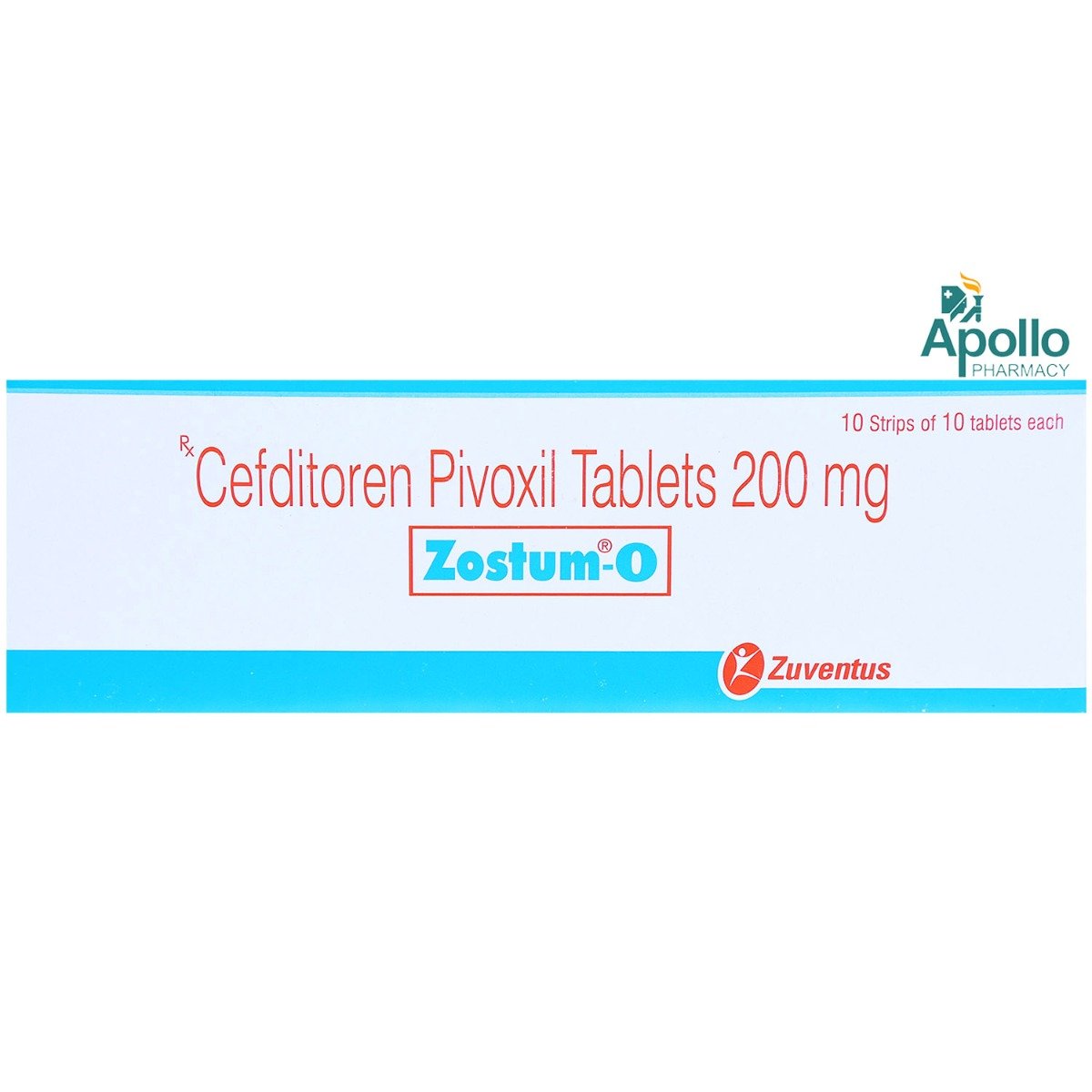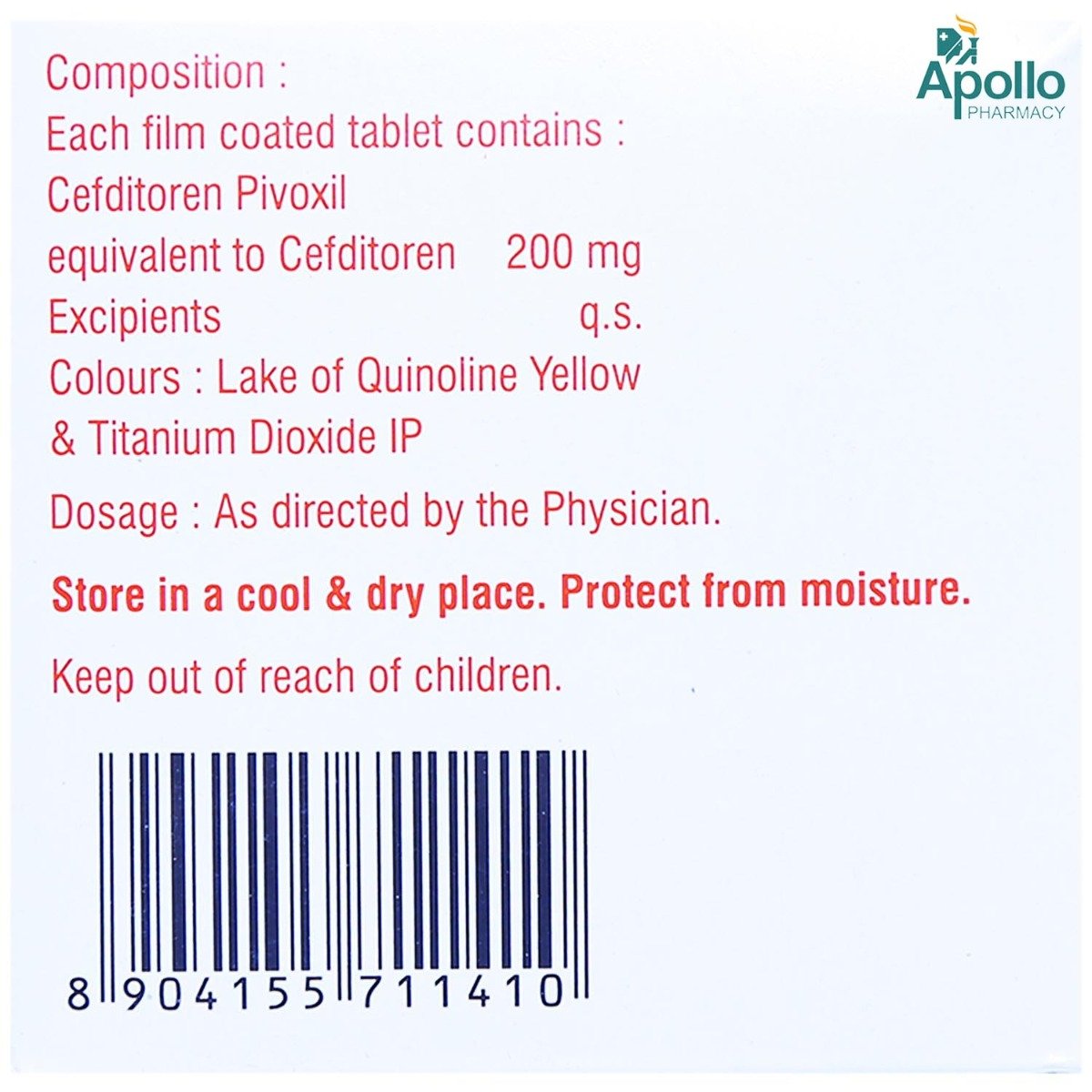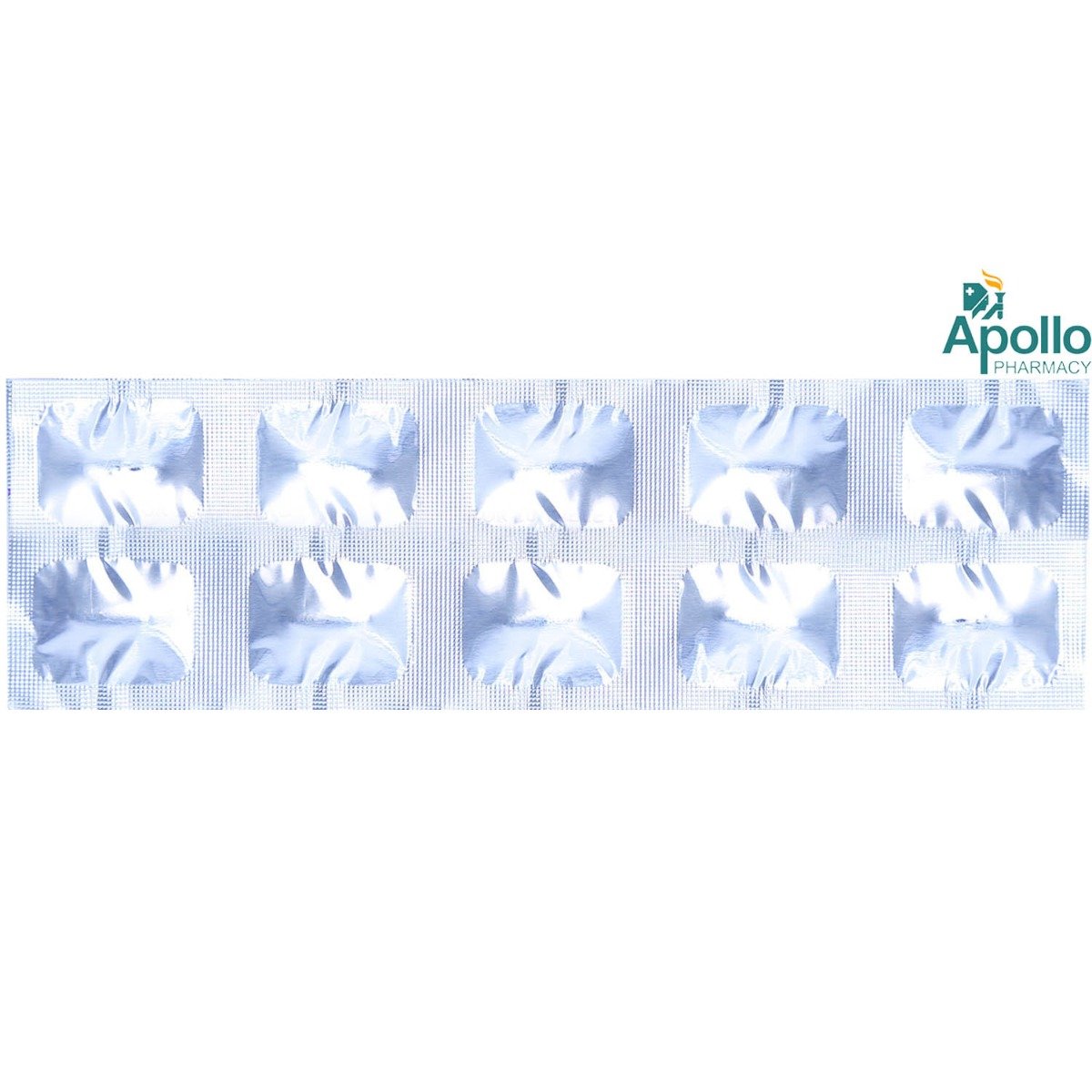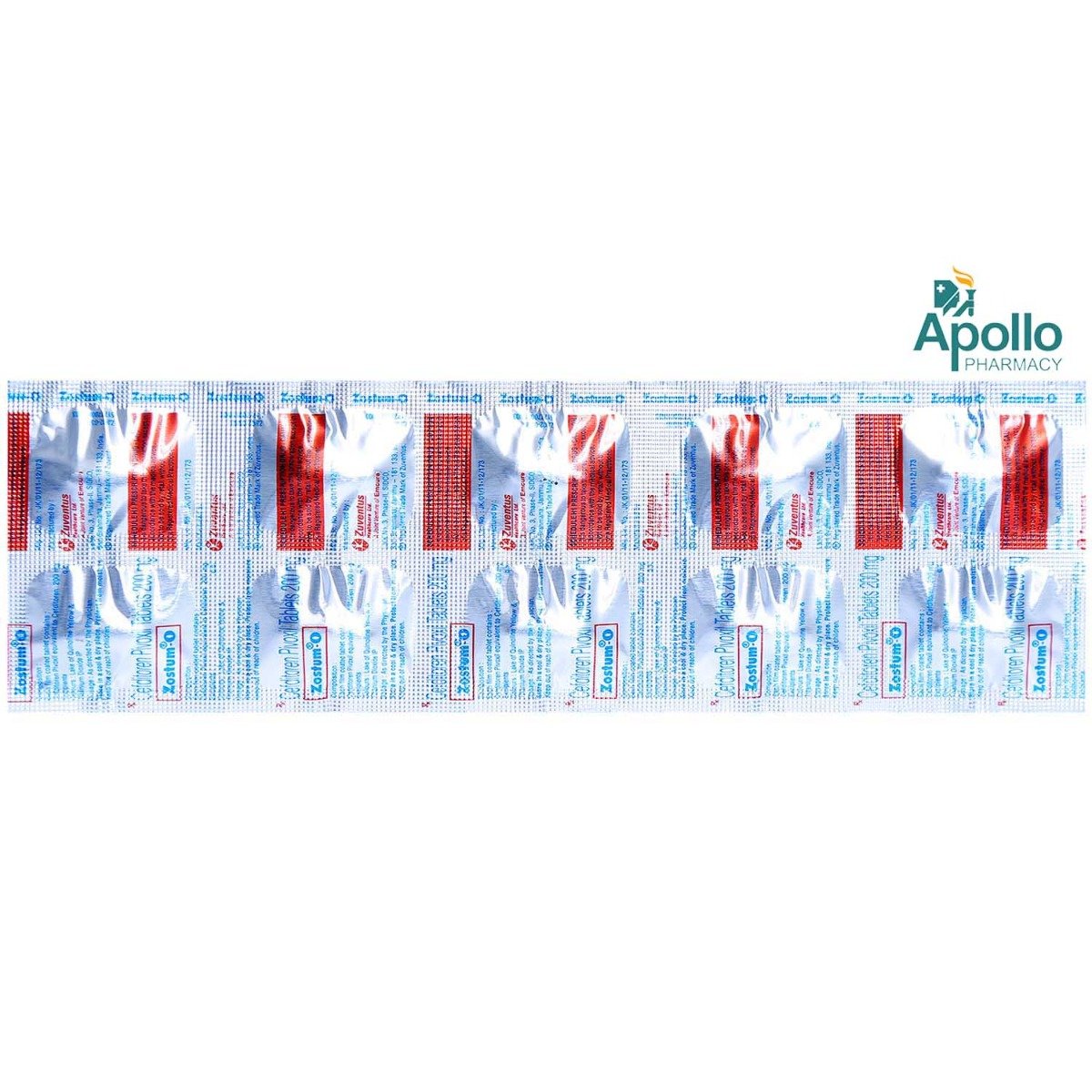Zostum-O Tablet





MRP ₹498
(Inclusive of all Taxes)
₹74.7 Cashback (15%)
know your delivery time
Provide Delivery Location
Composition :
Manufacturer/Marketer :
Consume Type :
Expires on or after :
Return Policy :
Selected Pack Size:10
10 ₹448.2
(₹44.82 per unit)
Out of stock

Secure Payment

Trusted by 8 Crore Indians

Genuine Products
Therapeutic Class
Country of origin
Manufacturer/Marketer address
Disclaimer
Alcohol
Safe if prescribed
Avoid consumption of alcohol with Zostum-O Tablet as it may increase the risk of adverse effects.
Pregnancy
Consult your doctor
Zostum-O Tablet is a category B pregnancy drug and is given to pregnant women only if the doctor thinks benefits outweigh risks. Please consult a doctor if you are pregnant or planning for pregnancy.
Breast Feeding
Consult your doctor
It is not known that Zostum-O Tablet may be excreted in breast milk. Therefore, it is given to breastfeeding mothers only if the doctor thinks benefits are greater than risks. Please consult a doctor if you are breastfeeding.
Driving
Safe if prescribed
Zostum-O Tablet usually does not affect your ability to drive or operate machinery.
Liver
Consult your doctor
Zostum-O Tablet to be taken with caution, especially if you have a history of Liver diseases/conditions. The dose may have to be adjusted by your doctor.
Kidney
Consult your doctor
Zostum-O Tablet to be taken with caution, especially if you have a history of Kidney diseases/conditions. The dose may have to be adjusted by your doctor.
Children
Safe if prescribed
The tablet form is not recommended for children below 12 years.
Product Substitutes
About Zostum-O Tablet
Zostum-O Tablet belongs to a class of drugs called 'antibiotics' used to treat several bacterial infections of the skin, throat, tonsils, pneumonia and bronchitis (infection in the airway tubes). Bacterial infection is a condition in which harmful bacteria grow in the body and cause infection. It can infect any part of the body and multiply very quickly. Zostum-O Tablet does not work against infections, flu or cold symptoms caused by the virus.
Zostum-O Tablet contains Cefditoren an antibiotic that works by interfering with the formation of the bacterial cell wall (a protective covering) necessary for their survival. Thereby damages the bacterial cell wall and kills the bacterial cell. Thus, it prevents the growth of bacterial infections.
Take Zostum-O Tablet as prescribed by your doctor. You are advised to take Zostum-O Tablet for as long as your doctor has prescribed it for you based on your medical condition. You may experience indigestion, diarrhea, stomach pain and nausea. Most of these side effects of Zostum-O Tablet do not require medical attention and gradually resolve over time. However, if the side effects persist or worsen, please consult your doctor.
Before starting Zostum-O Tablet , please inform your doctor if you have any allergies (against these antibiotics). Talk with your doctor if you have an allergy to milk. Before taking Zostum-O Tablet inform your doctor of the conditions like liver and kidney disease. If you are pregnant or breastfeeding, please inform your doctor before taking Zostum-O Tablet . Zostum-O Tablet is not recommended for use in children less than 12 years.
Uses of Zostum-O Tablet
Medicinal Benefits Mweb
Key Benefits
Zostum-O Tablet contains cefditoren a broad-spectrum antibiotic that acts against both aerobic (grow in the presence of oxygen) and anaerobic (grow in the absence of oxygen) gram-negative and gram-positive bacteria. It is used in the treatment of several bacterial infections of the skin, throat, tonsils, pneumonia and bronchitis (infection in the airway tubes). Zostum-O Tablet interferes with the formation of the bacterial cell wall (a protective covering) necessary for their survival. Thereby damages the bacterial cell wall and kills bacteria.
Directions for Use
Side Effects of Zostum-O Tablet
- Indigestion
- Diarrhea
- Stomach pain
- Nausea
- Headache
- Abdominal pain
- Vaginitis (inflammation of the vagina)
Drug Warnings
If you are allergic to Zostum-O Tablet , penicillins, or any other medicines, please tell your doctor. If you have kidney problems, diabetes, stomach or intestinal disorder such as inflammation of the large intestine and ulcers inform your doctor before taking Zostum-O Tablet . If you are pregnant or breastfeeding, please inform your doctor before taking Zostum-O Tablet . The use of Zostum-O Tablet can cause diarrhea, so if you have watery or bloody diarrhea, stop taking Zostum-O Tablet and call your doctor. However, do not take any anti-diarrheal medicine until your doctor tells you. If you are on dialysis, inform your doctor before taking Zostum-O Tablet so that the dose may be reduced accordingly. Maintain a gap between Zostum-O Tablet and antacid. Zostum-O Tablet should not be given older than 65 years as it may cause an increased risk of side effects. Zostum-O Tablet should not be used in children below 12 years.
Drug-Drug Interactions
Drug-Drug Interactions
Login/Sign Up
When BCG vaccine is taken with Zostum-O Tablet, its effectiveness may be reduced.
How to manage the interaction:
Although taking Zostum-O Tablet and BCG vaccine together can evidently cause an interaction, it can be taken if your doctor has suggested it. However, if you experience any unusual symptoms consult a doctor. Do not stop using any medications without talking to a doctor.
Taking the cholera vaccine after or along with Zostum-O Tablet may reduce the activity of the vaccine.
How to manage the interaction:
Although taking Zostum-O Tablet and Cholera, live attenuated together can evidently cause an interaction, it can be taken if your doctor has suggested it. Make sure to inform the doctor if you are on Cholera vaccine dose or you have already taken it. You should wait at least 14 days after finishing your antibiotic treatment before receiving the cholera vaccine in order to ensure an appropriate immune response. In case of any unusual side effects, consult a doctor. Do not stop using any medications without a doctor's advice.
Taking these medications together might make it harder for your body to absorb atazanavir, which could make it less effective.
How to manage the interaction:
v
Drug-Food Interactions
Drug-Food Interactions
Login/Sign Up
Drug-Diseases Interactions
Drug-Diseases Interactions
Login/Sign Up
Drug-Drug Interactions Checker List
- WARFARIN
- PROBENECID
- RANITIDINE
- FAMOTIDINE
- TYPHOID VACCINE
- CHOLERA VACCINE
Habit Forming
Special Advise
- Zostum-O Tablet may cause live bacterial vaccines (such as typhoid vaccine) to not work as well. Do not have any immunizations/vaccinations while using this medication unless your doctor tells you to.
Diet & Lifestyle Advise
- Probiotics should be taken after taking the full course of Zostum-O Tablet to restore some of the healthy bacteria in the intestines that may have been killed. Taking probiotics after antibiotic treatment can reduce the risk of antibiotic-associated diarrhea. Certain fermented foods like yogurt, cheese, sauerkraut, kombucha and kimchi can help restore the intestine's good bacteria.
- Include more fiber-enriched food in your diet, as it can be easily digested by your gut bacteria, which helps stimulate their growth. Thus, fiber foods may help restore healthy gut bacteria after a course of antibiotics. Whole grains like whole-grain bread, brown rice should be included in your diet.
- Avoid taking too much calcium, iron-enriched foods, and drinks as it might affect the working of Zostum-O Tablet .
- Avoid intake of alcoholic beverages with Zostum-O Tablet as it can make you dehydrated and affect your sleep. This can make it harder for your body to aid the Zostum-O Tablet in fighting off infections.
All Substitutes & Brand Comparisons
RX
Out of StockNot for online saleCefdicare 200mg Tablet
Meyer Organics Pvt Ltd
₹359.61
(₹32.37 per unit)
27% CHEAPERRX
Out of StockNot for online saleTaxitorin Tablet 10's
Alkem Laboratories Ltd
₹375
(₹33.75 per unit)
24% CHEAPERRX
Out of StockNot for online saleCeftorin 200mg Tablet
Cipla Ltd
₹240
(₹36.0 per unit)
19% CHEAPER

Have a query?
Buy best Infections & Infestation products by
Cipla Ltd
Macleods Pharmaceuticals Ltd
Alkem Laboratories Ltd
Lupin Ltd
Abbott India Ltd
Sun Pharmaceutical Industries Ltd
Mankind Pharma Pvt Ltd
Micro Labs Ltd
Aristo Pharmaceuticals Pvt Ltd
FDC Ltd
Intas Pharmaceuticals Ltd
Glenmark Pharmaceuticals Ltd
Ipca Laboratories Ltd
Torrent Pharmaceuticals Ltd
Zydus Healthcare Ltd
Biochem Pharmaceutical Industries Ltd
Zuventus Healthcare Ltd
United Biotech Pvt Ltd
Hetero Drugs Ltd
Emcure Pharmaceuticals Ltd
Alembic Pharmaceuticals Ltd
Indoco Remedies Ltd
Fusion Health Care Pvt Ltd
Dr Reddy's Laboratories Ltd
Leeford Healthcare Ltd
Cadila Healthcare Ltd
Wockhardt Ltd
Zydus Cadila
GlaxoSmithKline Pharmaceuticals Ltd
Morepen Laboratories Ltd
Blue Cross Laboratories Pvt Ltd
Cadila Pharmaceuticals Ltd
Converge Biotech Pvt Ltd
Elder Pharmaceuticals Ltd
Hetero Healthcare Pvt Ltd
Pfizer Ltd
AAA Pharma Trade Pvt Ltd
Gufic Bioscience Ltd
Mylan Pharmaceuticals Pvt Ltd
Corona Remedies Pvt Ltd
Wallace Pharmaceuticals Pvt Ltd
Apex Laboratories Pvt Ltd
Medishri Healthcare Pvt Ltd
Akumentis Healthcare Ltd
Alniche Life Sciences Pvt Ltd
Hegde & Hegde Pharmaceutica Llp
Veritaz Healthcare Ltd
Ranbaxy Laboratories Ltd
Koye Pharmaceuticals Pvt Ltd
Shreya Life Sciences Pvt Ltd
Overseas Health Care Pvt Ltd
Biocon Ltd
Indchemie Health Specialities Pvt Ltd
Medley Pharmaceuticals Ltd
Brinton Pharmaceuticals Ltd
J B Chemicals & Pharmaceuticals Ltd
Unifaith Biotech Pvt Ltd
Ajanta Pharma Ltd
Biochemix Health Care Pvt Ltd
Natco Pharma Ltd
Samarth Life Sciences Pvt Ltd
Unichem International
Laborate Pharmaceuticals India Ltd
Unipark Biotech Pvt Ltd
Zymes Bioscience Pvt Ltd
Indiabulls Pharmaceuticals Pvt Ltd
Neon Laboratories Ltd
Vasu Organics Pvt Ltd
DR Johns Lab Pharma Pvt Ltd
East West Pharma India Pvt Ltd
La Renon Healthcare Pvt Ltd
Medgen Drugs And Laboratories Pvt Ltd
Novartis India Ltd
Canixa Life Sciences Pvt Ltd
Icarus Health Care Pvt Ltd
Lincoln Pharmaceuticals Ltd
Celon Laboratories Pvt Ltd
Concept Pharmaceuticals Ltd
Klm Laboratories Pvt Ltd
Nicholas Piramal India Ltd
Systopic Laboratories Pvt Ltd
Yuventis Pharmaceuticals
Capital Pharma
German Remedies Ltd
Pristine Pearl Pharma Pvt Ltd
Unison Pharmaceuticals Pvt Ltd
Aurz Pharmaceutical Pvt Ltd
Clover Health Care Pharma
Kepler Healthcare Pvt Ltd
Allites Life Sciences Pvt Ltd
Auspharma Pvt Ltd
Intra Life Pvt Ltd
Jolly Healthcare
Linux Laboratories Pvt Ltd
Ozone Pharmaceuticals Ltd
Cachet Pharmaceuticals Pvt Ltd
Comed Chemicals Ltd
Delcure Life Sciences Ltd
Fresenius Kabi India Pvt Ltd
Khandelwal Laboratories Pvt Ltd
Customers Also Bought




